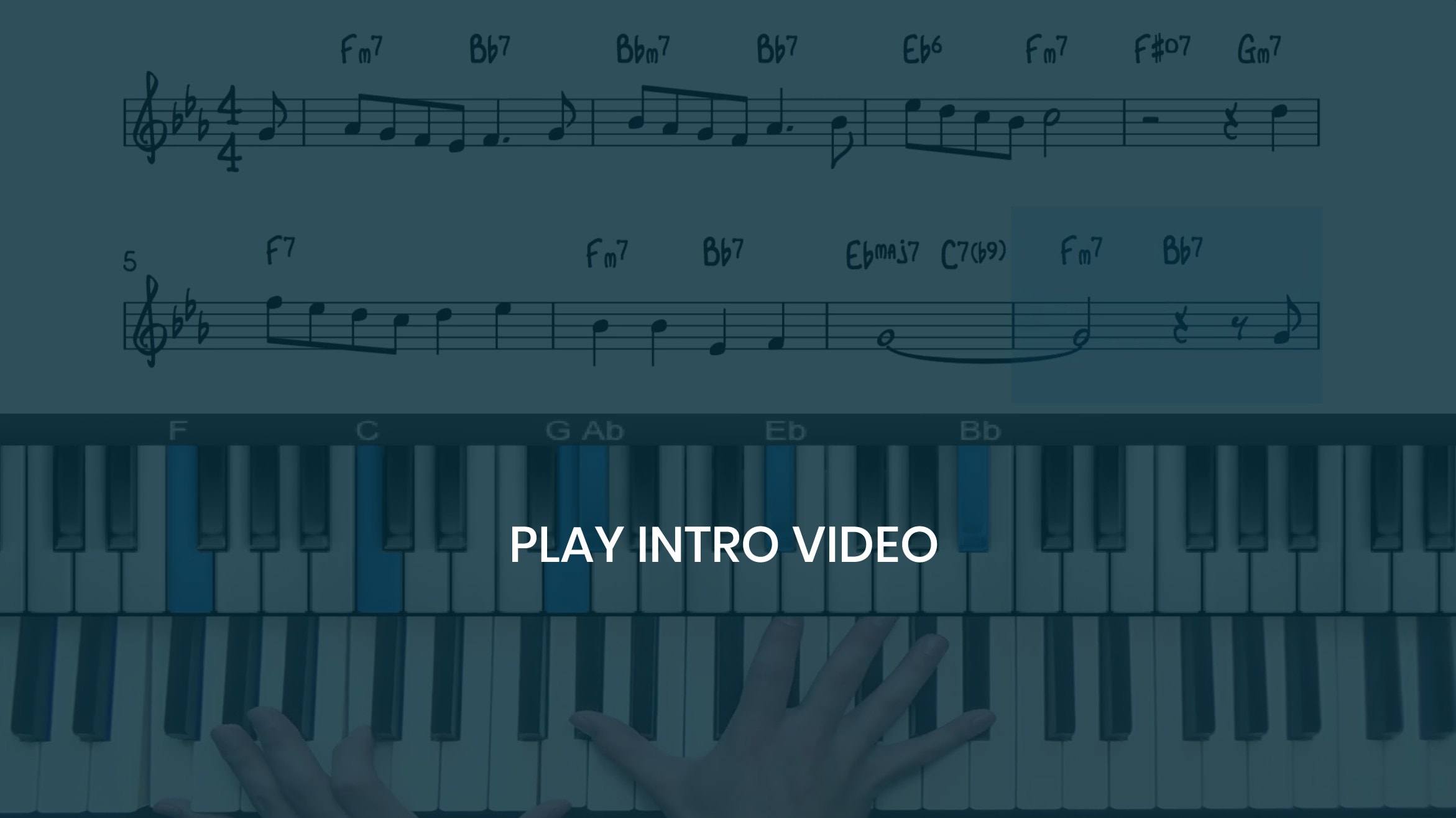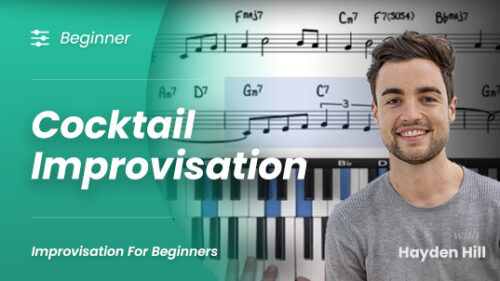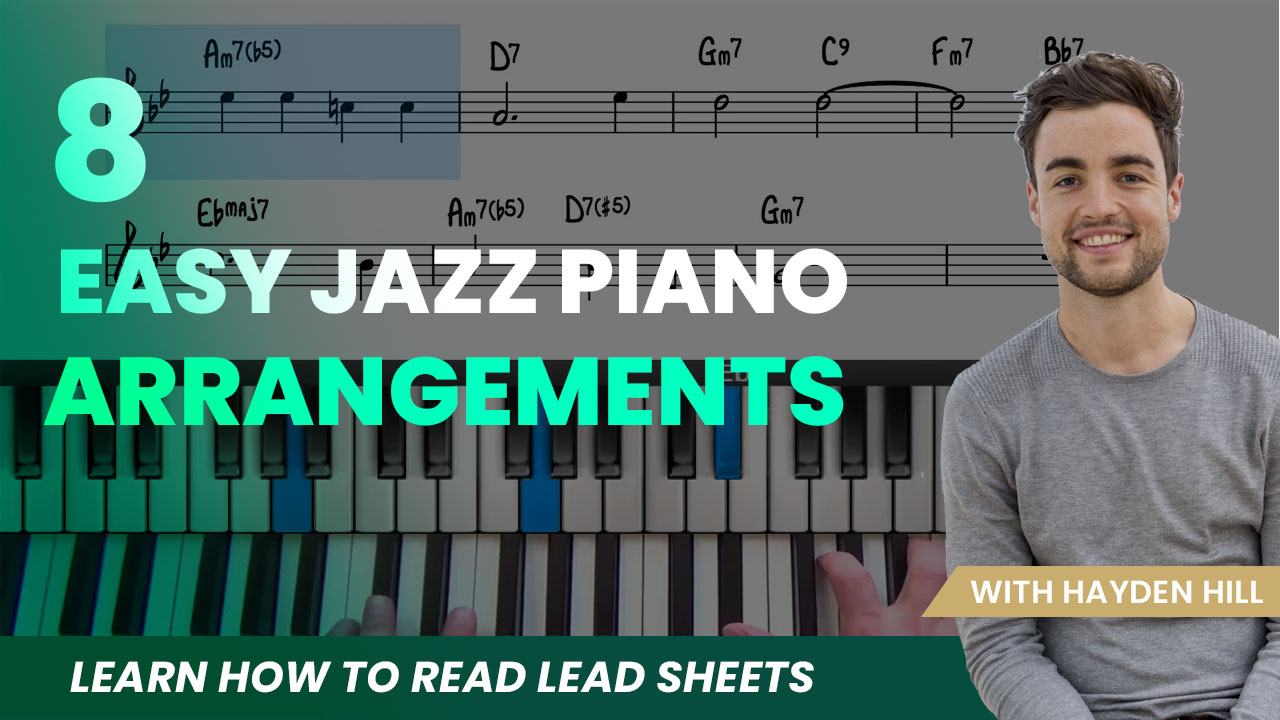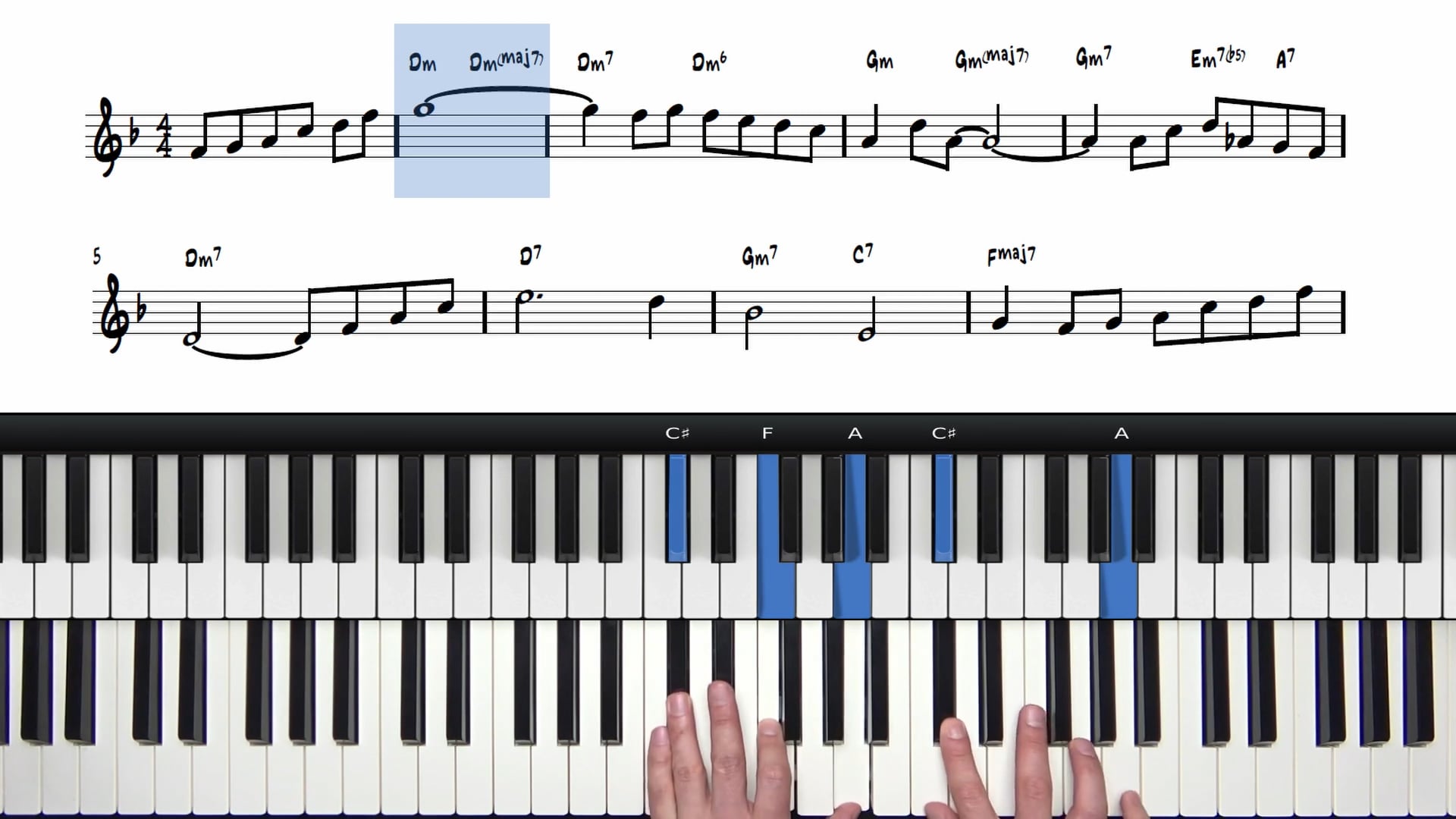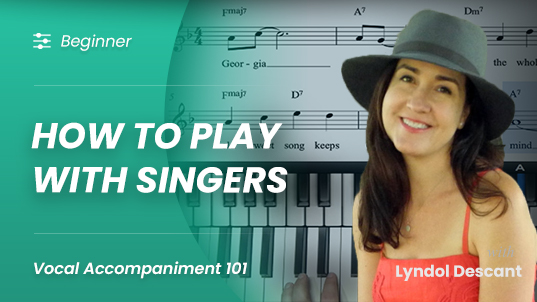'Misty' Cocktail Piano Improv
Learn how to play and improvise in the cocktail piano style. We cover chord voicings, chord progressions, and improvisation techniques for solo jazz piano.
to this course, right now!
Summary Information:
One-time purchase - learn at your own pace, with unlimited access to this course.
- Difficulty: Intermediate
- View Online with Lifetime Access
- Video Slow Down Controls
- A/B Loop
- Theory Lessons
- Performances & Arrangements
- 35 PDF Files & Lesson Supplements
'Misty' Cocktail Piano Improv
Learn how to play and improvise in the cocktail piano style. We cover chord voicings, chord progressions, and improvisation techniques for solo jazz piano.
PianoGroove’s Cocktail Piano For Beginners Course is a step-by-step method for arranging and improvising over jazz standards in a cocktail piano style.
The first module explores harmony and how to internalise the chord changes and the different voicing options available to us. We explore 2 handed voicings, the stride left hand style, shell voicings, and 10th voicings.
The second module focuses on the art of improvisation. We start with chord tone drills and arpeggio exercises. We then introduce chord alterations and chromatic lines. Finally we explore modal scales, blues scales, and how to create and develop motifs and a narrative in our improvisations.
We explore the key of Eb Major including the diatonic 7th chords and the common chord progressions such as the 251 and 36251 progression.
We arrange the A section of the tune "Misty" with 3-note spread voicings which contain the root, 3rd, 7th, and sometimes the 5th.
We introduce chord extensions into our voicings for the A Section of "Misty". Chord extensions include the 9th, 11th, and 13th.
The stride left hand style drives forward the pulse of the tune and frees up our right hand for melodic embellishment and decoration.
In this lesson we are going to identify the chords within the 1625 and 3625 where we have the freedom to change the chord qualities.
We create a bigger and more powerful sounding arrangement by playing the right hand melody in octaves above a stride left hand style.
We explore techniques to transition from the 2nd A section into the Bridge and voicing options for the B Section harmony.
In this lesson we will learn how to embellish the turnaround sections with extensions, echoing, inner voices, USTs, arpeggios, & Sus chords.
Chord tones are ideal 'landing places' to finish our improvised phrases and are useful 'resting points' to allow our improvisations to breath.
We create diatonic & chromatic approach patterns to help us to visualise the 7th as a strong landing point when improvising.
We explore how we can simply rearrange and rephrase the notes of the melody to create a structure and framework around which we improvise.
We will combine arpeggios runs and arpeggio patterns with chord tones and approach patterns that we have explored in the previous lessons.
We start with single alterations, then double alterations, then we will explore a versatile altered arpeggio run to use on dominant chords.
In this lesson we create interesting colours and tensions in our improvisations by targeting isolating the individual chord alterations.
We explore 2 chromatic lines that work beautifully over the 3625 progression. Apply this technique to any tune that you are working on.
Learn how to get an authentic bluesy sound by using crushed notes, walk-ups, chromaticism, and New Orleans style licks and voicings.
We learn techniques for creating melodies over the minor line cliché, and how to create melodic interest over a single static chord type.
We take the diatonic 7th chords and change the chord qualities to dominant which allows us to access more interesting colours & textures.
In this lesson we explore the 4736251 formula as a framework for creating jazz chord progressions in the key of Eb Major.
-
Eb Major Diatonic Harmony File Type: pdf
-
Spread Voicings Notation File Type: pdf
-
Extended Voicings Notation File Type: pdf
-
Stride Left Hand Voicings File Type: pdf
-
Changing Chord Colours File Type: pdf
-
Octaves & Chord Melodies File Type: pdf
-
B Section Voicings Options File Type: pdf
-
Turnaround Voicings Options File Type: pdf
-
Targeting 3rds Exercise Notation File Type: pdf
-
Targeting The 7ths Notation File Type: pdf
-
Melody Inspiration Examples File Type: pdf
-
Arpeggio Shapes & Patterns File Type: pdf
-
Altered Arpeggio Patterns File Type: pdf
-
Targeting Chord Alterations File Type: pdf
-
Chromatic Lines & Phrases File Type: pdf
-
Blues Scale Licks & Improv File Type: pdf
-
B Section Improv Notation File Type: pdf
-
1436251 Progressions Worksheet File Type: pdf
-
Jazz Chord Progression Formulas File Type: pdf
to this course, right now!
